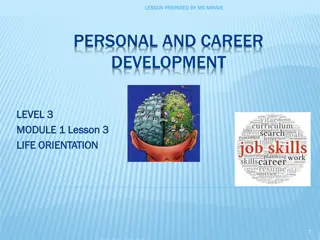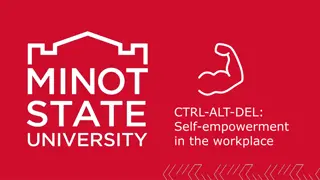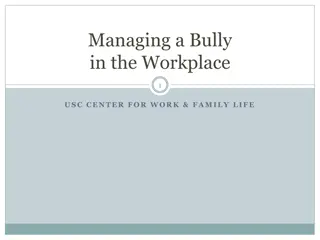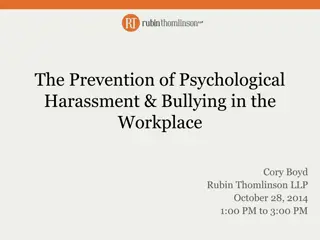
Overcoming Barriers in the Workplace for Individuals with Autism
Learn about the various barriers individuals with autism may face in the workplace, from communication challenges to sensory issues. Discover strategies to address these barriers and create a more inclusive work environment.
Download Presentation

Please find below an Image/Link to download the presentation.
The content on the website is provided AS IS for your information and personal use only. It may not be sold, licensed, or shared on other websites without obtaining consent from the author. If you encounter any issues during the download, it is possible that the publisher has removed the file from their server.
You are allowed to download the files provided on this website for personal or commercial use, subject to the condition that they are used lawfully. All files are the property of their respective owners.
The content on the website is provided AS IS for your information and personal use only. It may not be sold, licensed, or shared on other websites without obtaining consent from the author.
E N D
Presentation Transcript
OVERCOMING BARRIERS IN THE WORKPLACE Job adverts often use jargon. Interviews may have sensory distractions, interviewers may use badly-worded questions, and judge applicants on social behaviour such as eye contact and body language. BARRIER 1: GETTING EMPLOYMENT
OVERCOMING BARRIERS IN THE WORKPLACE Workplace induction may not include social issues and the unwritten rules of the organisation. Training may not recognise autistic learning styles. BARRIER 2: LEARNING THE JOB
OVERCOMING BARRIERS IN THE WORKPLACE Workers with autism may prefer written or visual communication. They may not speak, may not ask for help, or may ask endless questions. BARRIER 3: COMMUNICATION COMMUNICATION
OVERCOMING BARRIERS IN THE WORKPLACE Workplaces often demand intense social interaction, which can be difficult if you are autistic. BARRIER 4: SOCIAL INTERACTION
OVERCOMING BARRIERS IN THE WORKPLACE The sensory experiences of people with autism can be more (or less) intense than those of non-autistic people. BARRIER 5: SENSORY ISSUES
OVERCOMING BARRIERS IN THE WORKPLACE Many workplaces have rigid work schemes, causing workers with autism in difficulty managing time or prioritising. BARRIER 6: ORGANISING WORK
OVERCOMING BARRIERS IN THE WORKPLACE Managers may know little about autism, show favouritism, communicate inappropriately, or be too bossy. BARRIER 7: TROUBLE WITH MANAGERS
OVERCOMING BARRIERS IN THE WORKPLACE Bullies target people who seem different, whether they know their victim is autistic or not. Bullies often have authority over victims. BARRIER 8: BULLYING, HARASSMENT AND DISCRIMINATION
OVERCOMING BARRIERS IN THE WORKPLACE Unexpected change is hard to cope with, whether that s day-to-day disruption or grand reorganisation. BARRIER 9: CHANGE
OVERCOMING BARRIERS IN THE WORKPLACE Recent years have seen cuts to many services that support adults with autism including some for finding and keeping work. Work can also be less secure, for example with fixed-term or zero-hours contracts. BARRIER 10: JOB INSECURITY













![Workplace Violence Prevention Plan in [District]: Definitions, Elements, and Implementation](/thumb/117038/workplace-violence-prevention-plan-in-district-definitions-elements-and-implementation.jpg)








